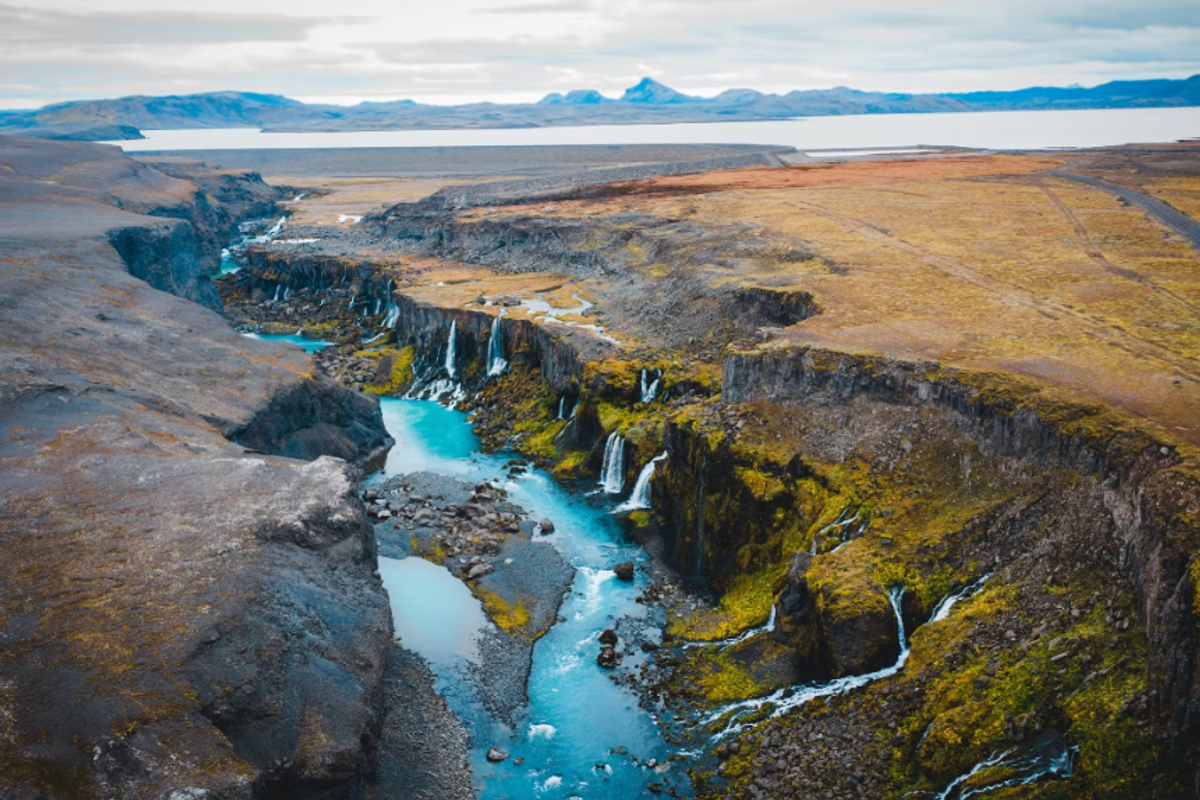Forget what you learned in elementary school geography class. Apparently the earth doesn’t have seven continents after all.
From a young age, we are taught that the world consists of Africa, Antarctica, Asia, Oceania, Europe, North America and South America. But new research suggests that this is actually not the case.
A new study published in the journal Gondwana Researchassumes that we actually only have six continents.
This extraordinary claim is the result of detailed studies of the geological processes that led to the separation of Europe and North America, and how these landmasses evolved over time.
The study’s lead author, Dr Jordan Phethean from the University of Derby, told Earth.comHis team’s results suggested that “the North American and Eurasian tectonic plates have not yet broken apart, as traditionally thought to have happened 52 million years ago.”
Instead, these plates are continuing to expand and are therefore still in the process of breaking apart rather than being completely separate entities, he said.
In other words, North America and Europe could be considered as a single continent rather than two separate continents.
 Research has put forward some radical theories about Iceland’s origins(Visit Iceland)
Research has put forward some radical theories about Iceland’s origins(Visit Iceland)
The focus of the study is the volcanic island of Iceland, which was previously thought to have been formed around 60 million years ago as a result of the Mid-Atlantic Ridge.
This tectonic boundary, formed by the North American and Eurasian plates, is believed to have triggered the formation of a hot mantle plume that eventually created the island, as Earth.com Notes.
However, by carefully analyzing tectonic movements on the African continent, Phethean and his colleagues have challenged this theory and put forward a radically new idea.
They argue that Iceland, together with the Greenland-Iceland-Faeroe Ridge (GIFR), contains geological fragments of both the European and North American tectonic plates.
In their opinion, this indicates that these regions are not isolated landforms, as previously assumed: rather, they are interconnected parts of a larger continental structure.
Scientists have even coined the term “Rifted Oceanic Magmatic Plateau” (ROMP) to describe this new geological phenomenon, which could have fundamental implications for our perception of the formation and separation of Earth’s continents.
In fact, its significance is so great that Phethean has described the discovery as the geoscientific equivalent of the discovery of the lost city of Atlantis.
This is because he and his colleagues discovered “fragments of a lost continent submerged in the sea, as well as thin lava flows stretching for miles.”
 The Afar region of Africa shows remarkable similarities to Iceland, the researchers found(iStock)
The Afar region of Africa shows remarkable similarities to Iceland, the researchers found(iStock)
In addition, the researchers found remarkable similarities between Iceland and the African volcanic region of Afar.
And if their study turns out to be correct, it would mean that the European and North American continents are still in the process of breaking apart and are therefore still connected.
Phethean acknowledges that his team’s findings will cause a stir, but insists they are based on careful research.
“The assumption that the GIFR contains a large amount of continental crust and that the European and North American tectonic plates may not have officially broken apart yet is controversial,” he acknowledged, while stressing that his work supports these hypotheses.
However, the research is still in the conceptual phase and the team would like to conduct further tests on Iceland’s volcanic rocks to obtain more concrete evidence of ancient continental crust.
They also use computer simulations and plate tectonic models to better understand the formation of the ROMP.
This research follows Phethean’s earlier discovery of a hidden “proto-microcontinent” between Canada and Greenland.
This primitive landmass is about the size of England and lies beneath the Davis Strait, directly off Baffin Island.
Phethean pointed out that “rifting and the formation of microcontinents are ongoing phenomena” that help scientists better understand continental behavior and plate tectonics.
Using this knowledge, experts can predict what our planet might look like in the distant future and figure out where useful resources might be found.
Sign up for our free weekly Indy100 newsletter
How you can participate the free WhatsApp channel of indy100
Have your say in our news democracy. Click the upvote icon at the top of the page to move this article up the Indy100 rankings.



